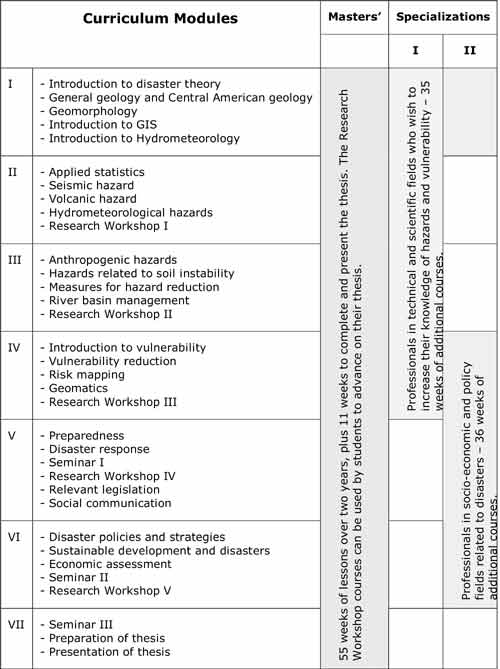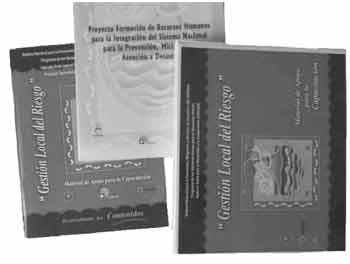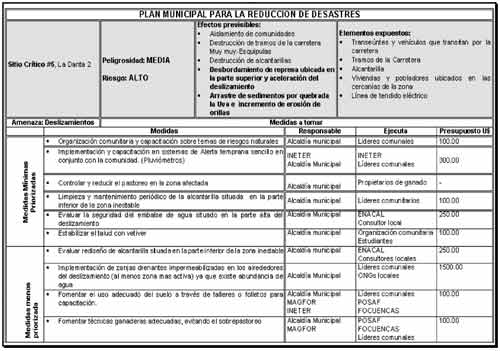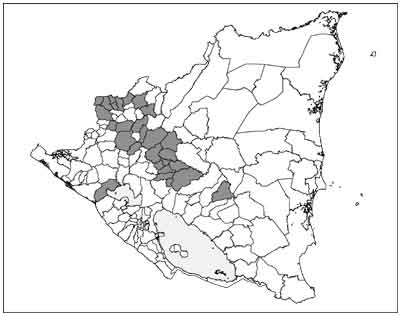|
Challenges
and Achievements of the Swiss Programme for Disaster Prevention in Central
America
Through its Natural
Disaster Prevention in Central America (PREVAC) programme, the Swiss Agency
for Development and Cooperation (SDC) has been contributing since 1999
to the development of a culture of prevention in the three countries in
the subregion that are considered the most vulnerable: El Salvador, Honduras
and Nicaragua.
The comprehensive
nature of the programme has not only made it possible for synergies to
emerge among the various projects, it has also revealed the key challenges
confronting efficient risk management in the various intervention fields,
namely:
- Education and
training
- For them to
be useful, the methodologies that are taught must be adapted to
local realities. Locally relevant factors must be taken into account,
such as unavailability of data.
- When attempting
to raise local professionals to international levels of knowledge
and expertise, in many cases the local baseline skills do not meet
international standards. Hence the demands on the students must
also be adjusted.
- Institutional
strengthening and good practices
- Frequently,
there is an institutional lack of clarity about many key issues,
including basic concepts (“vulnerability reduction”, “risk
management”), the organization required for risk and disaster
management (formal and informal national systems, specialized bodies,
the optimum degree of decentralization), and the priority that should
be assigned to various issues, such as technical vs. social approaches.
This lack of clarity hinders the assignment of responsibilities
and the development of strategic approaches among participating
institutions.
- In public
institutions, salaries are unattractive. This, together with the
impact of electoral processes on government personnel, leads to
a frequent turnover in staff.
- Awareness-raising
and implementation of risk management instruments and procedures at
the local level
- The main weakness
in this field is the general ineffectiveness of local governments,
due to a lack of real power (since central institutions impose their
will and objectives), poor competence in municipal management, and
a lack of resources, particularly financial resources.
Let us now turn to
some of the programme’s projects, indicating how these challenges
have been confronted.
|

The Central
American Masters’ Degree in Disaster Prevention and Risk Management
The purpose
of this MSc programme is to contribute to the sustainable development
of Central American nations through a reduction of vulnerability
to natural phenomena by means of high-level local-capacity building
in risk prevention and management.
The Masters’
programme is a joint effort by SDC and the Center for Geoscientific
Research (CIGEO) of the National Autonomous University of Nicaragua
(UNAN) at Managua. Final preparations are underway and preliminary
registration is now starting. The goal is to expand the programme
through strategic alliances, both academic and financial, at the
national, regional and international level.
The curriculum
has been designed for a broad target audience: scientists, decision-makers,
health and environment professionals and others. The complete cycle
will last two years and includes two specializations. (See Table.)
|
Support for the
Executive Secretariat of the National Disaster Reduction System
Support has been provided
to the Executive Secretariat of the recently established Nicaraguan National
Disaster Prevention, Mitigation and Response System (SNPMAD) through the
United Nations Development Programme (UNDP).

Publications by the
SNPMAD Executive Secretariat for raising awareness at the municipal level
These efforts have produced the following results:
- The System now
has an education and training component that is currently selecting
its tasks, assigning priorities and developing a training strategy.
- Significant training
has already been provided at the municipal level on risk management,
risk mapping and assessment, the new National System and the role of
disaster reduction in local development.
Detail of a risk map
aimed at improved land use management (ALARN Project, Nicaragua)
Support for Municipal Governments, Nicaragua
The Local Support
for Natural Hazards Assessment and Management (ALARN) project, the oldest
part of the PREVAC programme, has to date enables 28 Nicaraguan municipalities
in high-risk areas to develop risk assessments and local disaster reduction
plans. Hazard maps at a scale of 1:50,000 have been produced, as well
as disaster reduction plan summary cards for high-risk locations and the
municipalities as a whole, including proposals for risk-reduction measures
and zoning proposals for improved land use management.

Eample of a Municipal
Disaster Reduction Plan Summary Card
Local-level efforts
have been carried out by Nicaraguan professionals who received eminently
practical training during the first stage of the project. Some 60 nationals
have received this training. A large number of national government institutions
and NGOs have participated in the work since then. (See ISDR Informs June
2001 issue.)
However, not all participating
municipalities have taken full advantage to date of the tools provided
to integrate them into successful municipal management. Additional support
will be provided to help them achieve this goal.

Nicaraguan municipalities involved in the ALARN project
For more information
please contact:
SDC Team - ah_csc@ibw.com.ni
PREVAC - aneumann@ibw.com.ni
Masters’ Programme - mdesastr@cigeo.edu.ni
|




